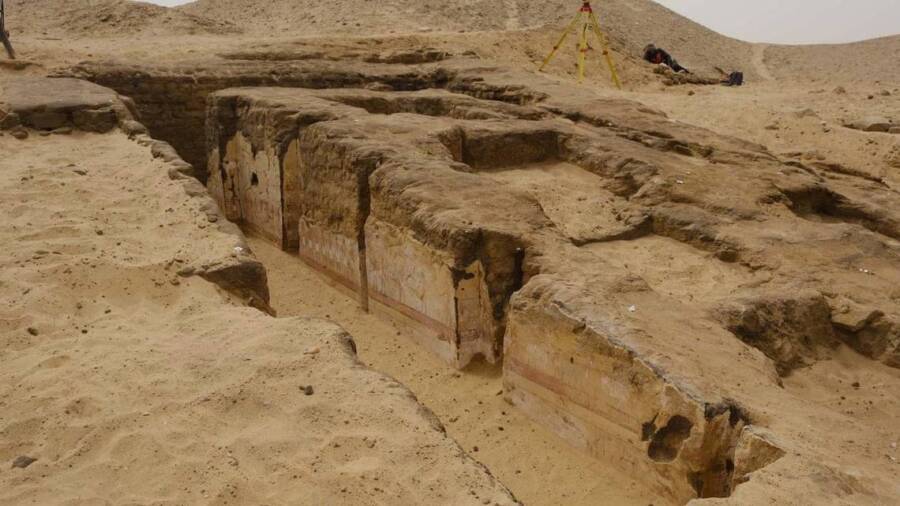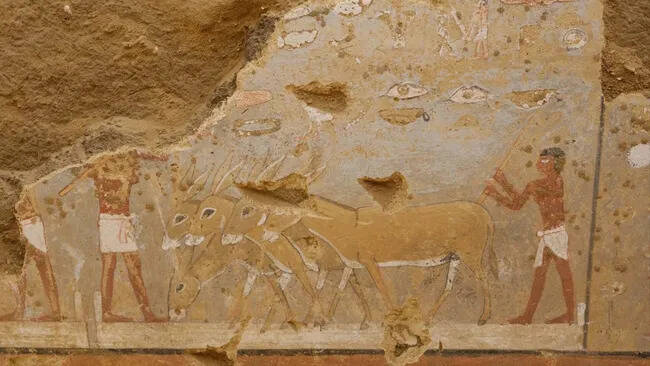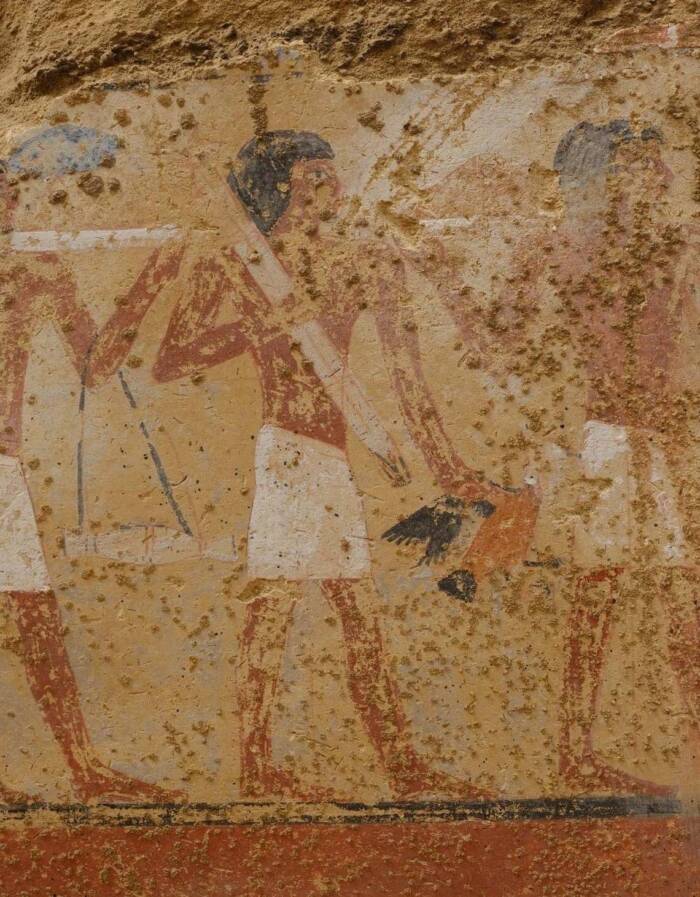Discovered in Dahshūr, Egypt, the tomb features several pieces of wall art depicting scenes of everyday life in Egypt's Old Kingdom.

Egyptian Ministry of Tourism and AntiquitiesThe site of the discovery in Dahshūr.
Archaeologists in Egypt’s Dahshūr necropolis have discovered a tomb from over 4,300 years ago belonging to a priestess and her husband.
The tomb features several stunning wall paintings depicting daily life in Egypt’s Old Kingdom. Now, researchers are hopeful that further excavations will unveil human remains.
The Astounding Discovery Of The Tomb At Dahshūr
The tomb’s excavation began as part of a joint project led by Egyptian and German archaeologists.
Deep in the ancient cemetery of Dahshūr, an area about 25 miles south of Cairo and part of the Memphis UNESCO heritage site, the team uncovered a 4,300-year-old mastaba, a mud-brick tomb with a flat roof and sloping sides.
While investigating the interior of the tomb, researchers identified its owners as Seneb-Neb-Af and his wife Idet, a couple who lived around the year 2300 B.C.E. Archaeologists determined this date by analyzing the inscriptions and pottery found in the tomb, as well as the design of the mastaba itself, to other examples from this period.
The inscriptions indicated that Idet was a priestess of Hathor, the ancient Egyptian goddess of sensuality, maternity, and music. Idet also held the title “Lady of the Sycamore.”
Her husband, Seneb-Neb-Af, likely worked in a variety of roles as an official at a nearby palace. Specifically, researchers say he was an administrator of tenants, though it’s difficult to discern what his precise duties were.
Project leader Dr. Stefan Seidlmayer of the German Archaeological Institute
explained to Live Science that Seneb-Neb-Af likely lived in a nearby town controlled by the palace and managed its funding. He may have also been responsible to determining who got to live there.
Intriguing And Revealing Wall Art

Egyptian Ministry of Tourism and AntiquitiesWall art from the tomb showing donkeys threshing grain.
The ancient couple likely lived during the late fifth dynasty or early sixth dynasty, some 4,300 years ago. During this time, the Great Pyramids of Giza already existed, and rulers were still constructing their own pyramids across the kingdom.
Researchers don’t know much about what daily life was like for ancient Egyptians in this period. But this discovery offers rare insights.
Within the tomb, researchers identified several pieces of wall art depicting mundane scenes of everyday life in Egypt’s Old Kingdom.
One scene shows ancient people using donkeys to thresh grain. Others show ships sailing through the Nile River, people purchasing goods from a market, and a procession of people presenting offerings, according to a press release from Egypt’s State Information Service.

Egypt’s Ministry of Tourism and AntiquitiesThe tomb features several pieces of wall art depicting everyday life in ancient Egypt.
Past work at the Dahshūr site largely focused on the pyramids of King Sneferu from the Old Kingdom and King Amenemhat III from the Middle Kingdom. These excavations began as early as 1976.
Now, researchers are shifting focus toward the everyday individuals of these periods, excavating the tombs of statesmen, priests, and administrators.
After the initial discovery of Seneb-Neb-Af and Idet’s tomb, researchers hope to uncover human remains that might provide further information about their lives as a priestess and administrator.
“The burial shafts of this tomb could not yet be excavated, therefore there are not yet any [unearthed] human remains,” Seidlmayer told Live Science. “We hope to excavate the shafts in the coming season — and then, of course, the human remains will be of key interest.”
After reading about the 4,300-year-old tomb in Dahshūr, discover the story of the Khopesh, the sword that helped the Ancient Egyptians build an empire. Then, dive into the story of the Lighthouse of Alexandria, one of the lost wonders of the world.





